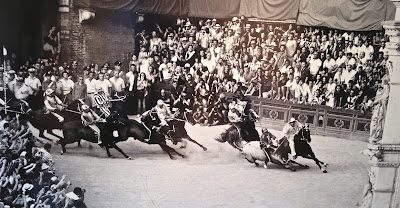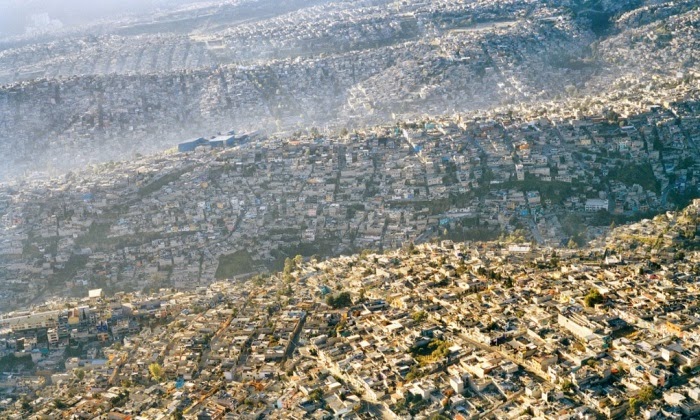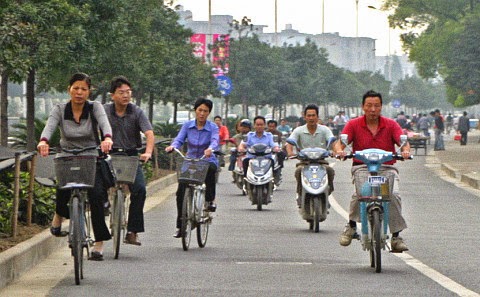A Question of Belief
 Presenting myself before one of the "Grand Inquisitors" at the office of the Archbishopric in the ancient Spanish city of Santiago de Compostela, I handed over my "Credencial" – a treasured booklet of official stamps (sellos). These I had received at various pilgrims' hostels (albergues de peregrinos) along the route of the Camino Primitivo. I had just completed a walk of over 350km (218 miles) in the space of 12 sweltering hot days. My feet were somewhat sensitive but I felt elated. So why did I need this "Compostela" (official certificate), I asked myself? A pilgrimage it may be but after all I am not religious.
Presenting myself before one of the "Grand Inquisitors" at the office of the Archbishopric in the ancient Spanish city of Santiago de Compostela, I handed over my "Credencial" – a treasured booklet of official stamps (sellos). These I had received at various pilgrims' hostels (albergues de peregrinos) along the route of the Camino Primitivo. I had just completed a walk of over 350km (218 miles) in the space of 12 sweltering hot days. My feet were somewhat sensitive but I felt elated. So why did I need this "Compostela" (official certificate), I asked myself? A pilgrimage it may be but after all I am not religious.The Inquisitor folded her pale hands and began questioning me. How had I travelled – by bicycle or on foot? Had I really walked the whole of the last 100km (the minimum requirement)? Where had my walk begun? What
was my motivation? I mumbled awkwardly, stumbling over the Spanish grammar. Her stare, her dark eyes and the quiet, reedy tone of her voice had unsettled me. Sternly she pushed a register towards me, followed by a Godly looking pen. Managing to break eye contact, I looked down and began completing the details, while she scrutinised my credencial. My name – my country – my town – my beliefs, then a list to select from. Was I, a) religious, b) spiritual, or c) a heathen, unbeliever or some such condemning descriptor. I ticked "spiritual" and then looked at what all the others above me had ticked. I looked over to the previous pages. By my estimate I think about 75% had ticked spiritual. About 15% had called themselves unbelievers and only the remaining 10% had ticked "religious." I was surprised. Was this a reliable reflection of the state of the world, or only of the type of people who are motivated to walk until their feet bleed for no material gain? I decided upon the latter.
The Inquisition - A Stern Business
After walking all the way to Santiago, the queue for the Compostela can be long
Pilgrims services are held daily in the cathedral. If you're lucky you'll witness the jaw-dropping sight of the huge incense burner swinging dangerously from side to side across the massed congregation
I normally steadfastly resist labels and stereotypes for myself, and yet I had comfortably ticked the box describing myself as spiritual. And thinking about it still, as I wandered back out into the sunlit cathedral square, it is how I could easily describe the mentality of the people I had found myself walking with for those 2 weeks. People I now, strangely, felt bonded to as if they were lifelong friends.
A few of those friends
Goals and The Pot of Gold Metaphor
There have been many illustrative folk stories over time which seek to demonstrate that a treasure which is sought as a goal, results in the person seeking it later realising that what was really to be gained by their quest, was not the goal itself but that which he or she experienced along the road to that goal.
 Most religions embrace and promote the idea of pilgrimage. Moslems are encouraged to make at least
Most religions embrace and promote the idea of pilgrimage. Moslems are encouraged to make at leastone journey to Mecca in their lives, while Hindus follow great rivers and Christians walk between great cathedral cities. I have little doubt that the wise originators of these religious groups had this aim in mind – for people to gain wisdom along the way. Even secular pilgrimages are not uncommon. The young shepherd boy in Paul Coelho's book "The Alchemist," who had a dream of a chest of buried gold, finally found the Alchemist he sought, in order to ask where he might find the treasure. Finally tracking him down, he was sent home again, back to his fields, but not before he had learned along the way to understand about the soul of the world and that his own destiny was entwined with that of the world, since, he was told, "they were written by the same hand." Only then did the young man discover the gold, buried in his own fields. And of course most of us know this metaphor to be true in practice. Yet as with many of life's most valuable lessons, what we subliminally know to be true is kept hidden from us while we are focussed too closely on our daily toils. We need to escape from work and responsibilities in order to really understand it to the level that we can act upon it – live by it.
The Camino Primitivo crosses mountainous and unspoilt Asturias before meeting the Camino Frances trail as one enters Galicia. The route has been extended to start north of Oviedo, close to the coast east of Gijon.
The Camino Primitivo
Amazingly around 200,000 people a year currently complete one of the Caminos de Santiago. Like all the best treasures in life, I stumbled upon this pilgrimage by accident. In Paul Coelho's Alchemist's terms, I allowed my destiny to take me down a path I needed to go. I had done a short 1 week Camino a year before – the Camino Finisterre – at the instigation of my wife (a wise woman where I am concerned). My brother then showed an interest and we agreed to do a 2 week Camino together. For a number of historic reasons this made the experience more profound – probably for both of us. Even the choice of the Camino Primitivo seemed like an accident, and yet it all came together, along with the selection of people we met, many of whom I feel sure will remain friends, to form something powerful and life-changing. Something that from my current perspective seems far from accidental. Fear not my friends, I have not "found religion," but I have found something valuable, or at least a large piece of it.
Priorities and Redirecting One's Life
At some point, often in late middle-age, we all seem to find ourselves bogged down in responsibilities, habits and the pressures of mortgages and careers etc. We tell ourselves we want to escape these things but that we don't have the time. We look for a friend or partner to join us and then use them as an excuse for not doing it. Our job begins to look busier or less secure. An elderly relative looks like they might be on their last legs. These are excuses and are almost never a valid reason. A week away on a short Camino is possible for almost anyone, both in terms of time and physical capability. The "nobody to do it with" excuse seems to be the most common. But one meets people along the way – in hostels you can hardly avoid it. Two weeks I found to be far more rewarding but that could be Step 2 if you are apprehensive. Nobody – and I mean nobody – who does a Camino regrets it. It is one of life's great truths. In fact most who do it never stop telling others what an amazing experience it was, which can become a pain.
Memorable dinner together in Bodenaya Albergue - Frienships are easily made on Camino
The Ecstasy and the Agony
Despite the intense feelings of "rightness" I felt as my camino progressed – a feeling that sometimes did border on the ecstatic – I came down to earth with a bump about two days from Santiago de Compostela. Suddenly I realised that what had almost become a way of life – getting up at 05:45, starting walking just before sunrise, stopping at small village cafes for simple breakfasts, striding over almost deserted sun-drenched and forested mountainsides with mist hanging in the valleys like cotton-wool, talking with friends about our lives and our feelings, then arriving tired but elated at a country albergue to rest before going out to the village bar for well deserved beer and simple food – would soon be over. Just a memory. I sank into a partial depression. Could I not continue walking forever – a lifelong pilgrimage? I got over this malaise of course, once I was home and able to share my thoughts and experiences with my family and close friends, but there is a part of me that will always be sad that it is over. Until the next time, perhaps?
After a hundred kilometres, unaccustomed feet begin to suffer
Some of the early morning vistas in Asturias take your breath away
The (optional) pass of the Hospitales near Campiello is the
toughest of any Camino, the book says. It's well worth the effort.
Often you look out from the green and gold hills and the windmills are the only manmade thing you can see
Typical path on the Camino Primitivo
The sun, the green forests and the golden grass were always there.
The Primitivo is less known than other Caminos so silence is not hard to find.
There are many guidebooks and on-line resources. My brother and I carried with us the recently updated book, The Northern Caminos, by Laura Perazzoli and Dave Whitson, published by Ciserone. I found it accurate and helpful, but I do find it is usually rewarding to stray away from the recommendations of others at times, even if it means going "wrong." My camino is my camino, and yours is yours.
 In 2008/9 Mark Swain cycled from Ireland to Tokyo, a journey of 10,000 miles, with his 18 year old son Sam. If you would like to read their bestselling travel book 'Long Road, Hard Lessons', you can find this, along with his two collections of short stories, on Amazon, Smashwords etc.
In 2008/9 Mark Swain cycled from Ireland to Tokyo, a journey of 10,000 miles, with his 18 year old son Sam. If you would like to read their bestselling travel book 'Long Road, Hard Lessons', you can find this, along with his two collections of short stories, on Amazon, Smashwords etc.
In the UK his books can also be found in all Waterstones Bookstores.




















































